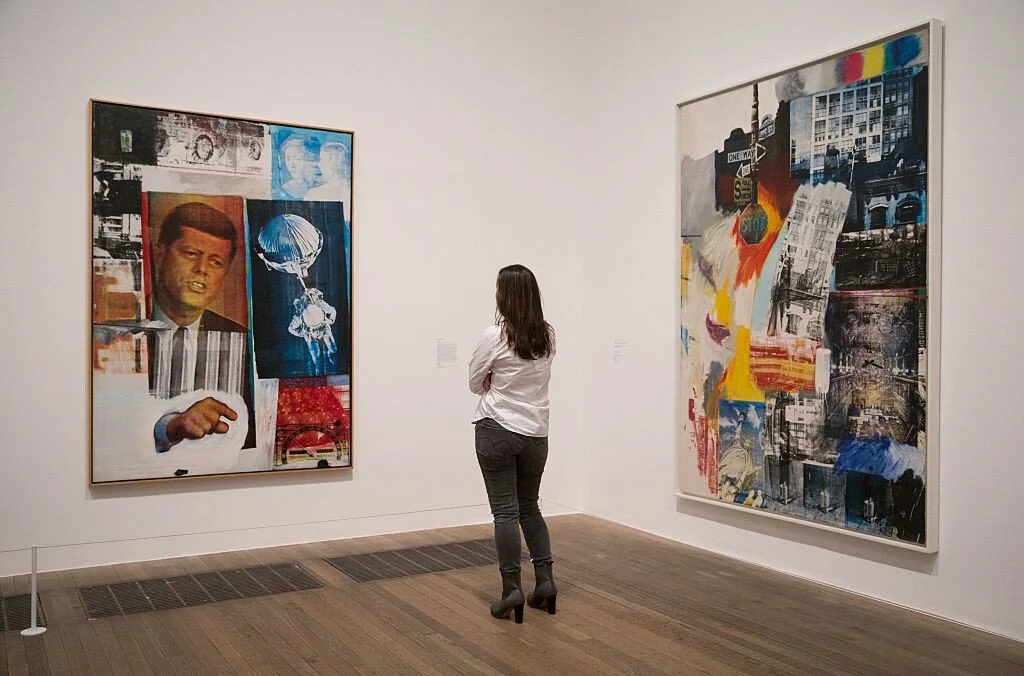As the head of her own full-service art-advisory business, Megan Fox Kelly provides curatorial and market advice, and fine-art services—including acquisitions and sales, strategic planning, collection management, and appraisals—to collectors, attorneys, financial advisors, foundations, and estates. Megan has advised artist and collector estates and foundations, including the Estate of Michael Crichton, The Robert A. and Beatrice C. Mayer Collection, The Terra Foundation for American Art, the Estate of Robert DeNiro, Sr., and the Robert Rauschenberg Foundation. She is the president of the Association of Professional Art Advisors, and a certified member of the Appraisers Association of America.
What does it mean to run a full service art-advisory business?
We serve our private clients by providing the market advice and curatorial support they need to successfully build, manage, care for, and sell their collections. We advise collectors on creating collections and work with them to acquire art through galleries, private dealers, and auction houses. We also help collectors and trusts with estate planning related to their fine-art collections and work with estate executors and beneficiaries on successful strategies for selling estate collections. In that capacity, we work not only with collectors and their heirs, but also with their trust and estate planners, financial advisors, and trust and estate attorneys.
For a variety of collectors and artist foundations, we also conduct appraisals for insurance, financial planning, and estates. In many ways, that appraisal work is the foundation of our business because in order to buy or sell art intelligently, we need to have the expertise to accurately value that art and explain that value to our clients. We cannot tell collectors what to buy or how much to pay for a work of art unless we ourselves have a strong understanding of value and the market as appraisers. In that capacity, I am a certified member of the Appraisers Association of America (AAA), which means that I have taken the requisite appraisal study courses and exams, and have over 25 years of expertise in valuing post-war and contemporary art. My experience and membership in the AAA enables me to do appraisals for insurance, and fair-market value appraisals for estates, financial planning, and litigation purposes.
How can APAA advisors make the market function better—to benefit others in the art world and make the market more transparent?
Everything is always transparent with our clients. Because of that transparency, our clients benefit from the same transparency with dealers and auction houses. For example, if you’re receiving any kind of commission or compensation for the works you are selling on behalf of your clients, it is contractually revealed to them in all of the transactions and contracts. The way that auction houses do business aligns with the way we do business. We help to bring additional expertise, either in consigning works to them or helping them present a work of art owned by our clients, providing all of the information we can possibly find. In that way, it’s a mutually beneficial relationship.
The same goes for dealers. When working with an APAA art advisor, it is always clear from the beginning how any future transaction is going to unfold, which is not always true with other brokers or art advisors. Whatever fee we make is disclosed to our clients, whether it’s a retainer or a commission that’s based on a transaction.
I know you don’t work with artists, but what do you think they should know about why and how people buy art?
Collectors buy for all different reasons. Some will see an artist’s work, and like it and buy it, whether that artist has a gallery or not. It doesn’t matter if that artist’s work is going to hold its value.
In order for something to hold its value or go up in value, there needs to be a secondary market for it. If you bought a painting for $1,000 and you wanted to sell it ten years later, where are you going to sell it? Is there a gallery or an auction house through which you can sell it? If not, how is its value established? Unless there’s a method to resell something, there isn’t a way to determine its future value. A collector who cares about that factor will very much ensure that a secondary market exists.
Someone who is not interested in the future investment value of an object is going to care less. They’re going to buy what they like. Understanding the motivations of certain collectors is something that’s really important to my business. When artists ask why their work is not selling or why certain collectors have not bought their art, the simple answer is that they weren’t interested in it.
What can living artists do to ensure that their legacy endures, and that their work and name are cared for properly after they’re gone?
Talk to an attorney. A good attorney, someone who has experience in planning for artist estates, is going to help them think through all of the different questions. There are also a number of resources out there in addition to your organization’s website. The Aspen Institute has the Artist-Endowed Foundations Initiative; they run seminars and have publications that address these concerns.
I’m often asked to speak at those seminars, and artists are often there. The artists—and sometimes their future foundation directors—attend these events to learn about the whole process. I think that’s a very useful step even before you talk to an attorney. You are developing an informed understanding so that you can discuss the issues with your attorney and create a plan for all of your art.













































